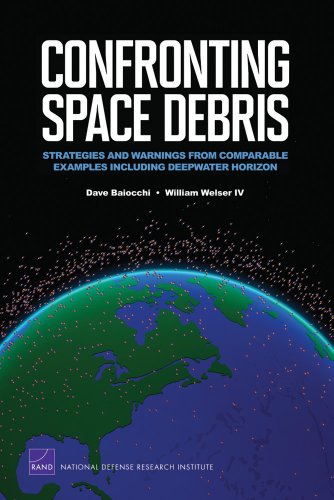
Confronting Space Debris
by Dave Baiocchi, William Welser IV
Publisher: RAND Corporation 2010
ISBN/ASIN: B004S8EMJ0
Number of pages: 157
Description:
Orbital space debris represents a growing threat to the operation of man-made systems in space. With the goal of guiding future mitigation or remediation efforts, this monograph examines nine comparable problems that share similarities with orbital debris: acid rain, U.S. commercial airline security, asbestos, chlorofluorocarbons, hazardous waste, oil spills, radon, email spam, and U.S. border control.
Download or read it online for free here:
Download link
(880KB, PDF)
Similar books
 How to design, build and test small liquid-fuel rocket engines
How to design, build and test small liquid-fuel rocket enginesby Leroy J. Krzycki - Rocketlab
This text provides the amateur builder with design information, fabrication procedures, test equipement requirements, and safe oeprating procedures for small liquid-fuel rocket engines, which are relatively simple devices.
(17541 views)
 Humans to Mars: Fifty Years of Mission Planning, 1950-2000
Humans to Mars: Fifty Years of Mission Planning, 1950-2000by David S. F. Portree - NASA History Division
By examining the evolution of 50 mission studies over the past 50 years, David Portree gives us a sense of the many options that Mars human space flight planners have explored. Portree covers a wide variety of ideas for human exploration of Mars...
(7433 views)
 Orders of Magnitude: A History of the NACA and NASA, 1915-1990
Orders of Magnitude: A History of the NACA and NASA, 1915-1990by Roger E. Bilstein - United States Government Printing
This is a concise history of NACA and its successor agency, NASA. This edition not only updates the historical record, but restores aeronautics to its due place in the history of the agency and of mankind's most fascinating and continuing voyage.
(16288 views)
 Resources of Near-Earth Space
Resources of Near-Earth Spaceby J. S. Lewis, M. S. Matthews - University of Arizona Press
Parts of the solar system that are most accessible from Earth are rich in materials of great potential value. Immediate uses of these resources to manufacture propellants, metals, and fluids can support future large-scale space activities.
(16497 views)